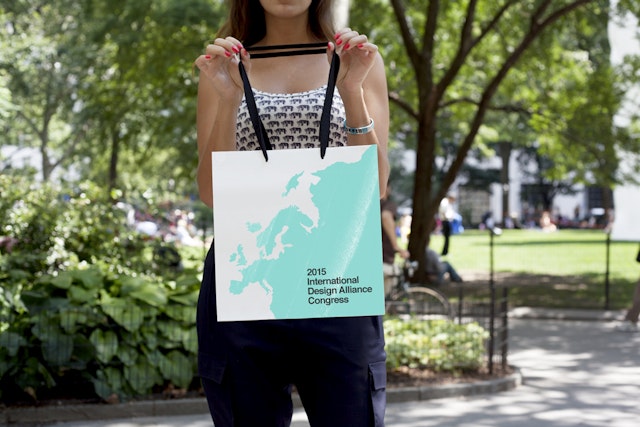



The logo rearranges the combined landmasses of the theoretical Pangaea to allow for a more distinctive form that displays the familiar forms of the represented continents.




According to the theory of plate techtonics, some 225 million years ago the continents of Earth were joined in a supercontinent that scientists have called "Pangaea," or Greek for “all lands." In the intervening eons, designers have evolved on their various landmasses, sometimes encountering one another at design conferences, in design annuals, and on design blogs.
It’s been said that the essence of design is the process of taking things apart and putting them together. The new permanent identity for the International Design Alliance (IDA) Congress created by Pentagram uses the visual metaphor of Pangaea to symbolize the unification of the design organizations—and designers—of the world.
The International Design Alliance (IDA) is a partnership of the International Council of Societies of Industrial Design (Icsid), the International Council of Communication Design (Icograda) and the International Federation of Interior Architects/Designers (IFI). The IDA is a strategic venture between the organizations and serves as a collective voice for all design disciplines. Every two years the IDA holds a biennial Congress in a host city somewhere in the world. Up until 2012, each Congress has had its own identity. The new symbol will unify them going forward.
The IDA Congress identity merges the silhouettes of the six continents from which IDA and its partner organizations draw members. The logo rearranges the combined landmasses of the theoretical Pangaea to allow for a more distinctive form that displays the familiar forms of the represented continents. The logo’s seemingly abstract shape is at once humanistic and organic. At a small scale, it looks like an ink blot, a splash of paint, or a casual brushstroke. Enlarged, the geographic details come into view.
The designers developed a flexible and cohesive system around the logo that allows each Congress host to customize the identity, showcasing the unique attributes and culture of the location. The IDA Pangaea serves as a holder for the IDA Congress identifier, both in long and short form. The strong shape provides a visual anchor for the key elements—the host city name, the year, and theme—and can accommodate both roman and non-roman alphabets. The shape can be rendered in any number of ways: as a solid color, as a textured gradient, as a window for images. The overall system balances consistency and flexibility, while supporting the image of the IDA Congress as a global event of consequence.
Office
- New York
